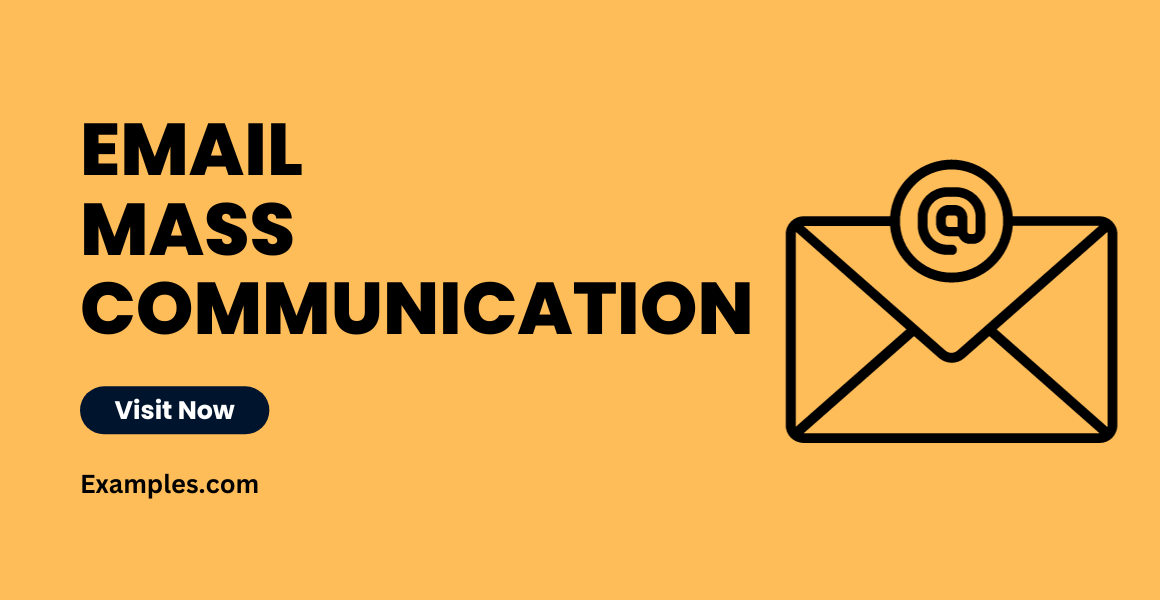29+ Email Mass Communication Examples
Email mass communication is an essential tool in the digital age, offering a direct and efficient way to reach and engage diverse audiences. This guide explores the nuances of using email as a powerful communication medium, highlighting its effectiveness in both marketing and information dissemination. From crafting personalized messages to implementing targeted campaigns, discover how to harness email for impactful communication. This guide includes practical communication examples and tips to optimize your email strategy, ensuring your messages resonate with recipients and achieve desired outcomes in the world of digital communication.
What is Email Mass Communication?
Email mass communication is the process of sending electronic messages to a large group of recipients simultaneously. It is a widely used tool in digital marketing and information dissemination, allowing for quick and direct communication with a broad audience. Unlike traditional mail, email provides a cost-effective, fast, and efficient way to convey messages, promotions, updates, and more. In the realm of mass communication, email serves as a crucial medium for businesses, organizations, and individuals to reach out to their stakeholders, customers, and subscribers effectively.
30 Email Mass Communication Examples
Email is a versatile tool in mass communication, adept at addressing various needs from marketing to informative updates. This collection of 30 unique email examples demonstrates how effective email communication can be tailored to different contexts and audiences. Each example represents a strategic approach in email marketing or information dissemination, highlighting the potential of email as a personalized, direct, and impactful medium in the digital age.
- Weekly Newsletter: “Stay updated with our weekly insights on market trends and tips.” Newsletters provide regular updates, keeping subscribers informed and engaged.
- Product Launch Announcement: “Introducing our latest innovation – available now!” Announce new products and offer exclusive first looks to subscribers.
- Event Invitation: “Join us for our annual networking event – RSVP today!” Invitations to events, webinars, and conferences.
- Customer Survey Email: “Tell us what you think! Take our 5-minute customer survey.” Collect feedback and improve services or products.
- Holiday Promotions: “Special holiday offers just for you – don’t miss out!” Seasonal promotions and discounts to boost sales.
- Birthday Discounts: “Happy Birthday! Here’s a special treat from us to you.” Personalized offers on subscriber’s birthdays.
- Flash Sale Alert: “24-hour flash sale starts now – grab the deals!” Quick, time-sensitive promotions to create urgency.
- Welcome Email for New Subscribers: “Welcome aboard! Here’s what to expect from us.” Introduce brand and set expectations for new subscribers.
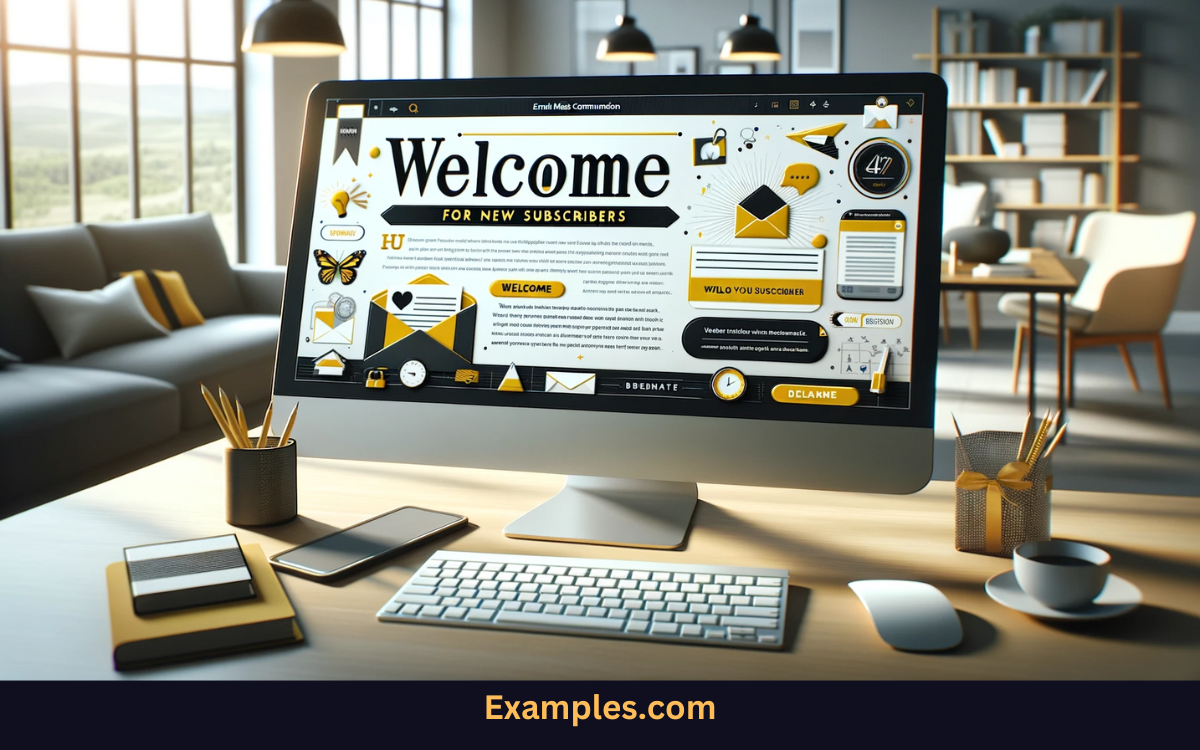
- Company News Update: “Here’s the latest from our company.” Keep subscribers informed about significant company news.
- Educational Series: “Learn more about financial wellness with our free guide.” Provide valuable information or tutorials on relevant topics.
- Thank You Email: “Thank you for your purchase! Here’s what’s next.” Post-purchase communication to build customer relationships.
- Re-engagement Email: “We miss you! Check out what’s new.” Re-engage subscribers who haven’t interacted in a while.
- Charity and Fundraising Email: “Join us in making a difference. Support our cause.” Encourage participation in charitable activities or fundraising.
- Exclusive Member Offers: “Exclusive offer for our VIP members – unlock now!” Special offers for loyalty program members.
- Feedback Request Post-Event: “Share your thoughts about our recent event.” Request feedback to improve future events.
- Service Renewal Reminder: “Your subscription is about to expire – renew now.” Remind customers about renewing services or subscriptions.
- Cart Abandonment Email: “Forgot something? Your cart is waiting!” Remind customers about items left in their shopping cart.
- Back in Stock Notification: “Your favorite item is back in stock – order now!” Alert customers when a popular product is available again.
- Referral Program Announcement: “Refer a friend and earn rewards!” Promote a referral program to existing customers.
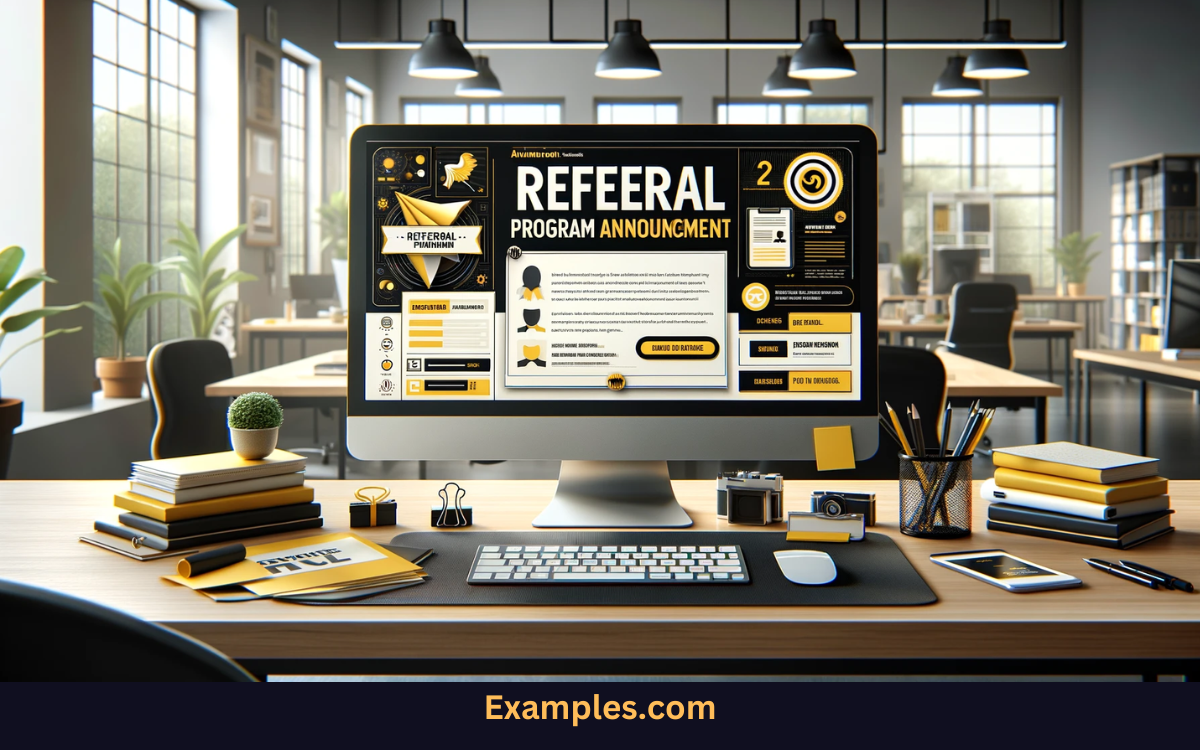
- Policy Update Information: “Important update to our privacy policy.” Inform subscribers about changes in company policies.
- Contest or Giveaway Announcement: “Enter our contest to win exciting prizes!” Engage subscribers with contests or giveaways.
- Industry Insights and Reports: “Explore the latest trends in our industry report.” Share valuable industry knowledge and insights.
- Testimonial Request: “Share your experience with us!” Request testimonials or reviews from customers.
- Cross-promotion with Partners: “Special offers from our partners just for you.” Promote offers from partner companies.
- Weather-related Updates or Tips: “Stay safe during the storm with these tips.” Provide helpful information related to current weather events.
- Early Access to Sales: “Get early access to our upcoming sale event!” Offer subscribers early access to sales or promotions.
- Customer Loyalty Rewards: “Thanks for being with us! Here’s a reward for your loyalty.” Reward long-term customers with special offers.
- Announcement of Online Workshops or Webinars: “Join our free online workshop on digital marketing.” Invite subscribers to educational online events.
- Seasonal Recipe or DIY Project: “Try this delicious recipe for summer!” Share engaging content like recipes or DIY projects.
- Year-in-Review Recap: “A look back at our year together!” Recap the year’s highlights and achievements with subscribers.
What are the Email Mass Communication Guidelines?
Effective email mass communication requires adherence to certain guidelines that ensure your messages are well-received, impactful, and able to achieve their intended purpose. Whether you are engaging in email marketing, informational updates, or any other form of digital correspondence, following these key guidelines will enhance the effectiveness of your email communications.
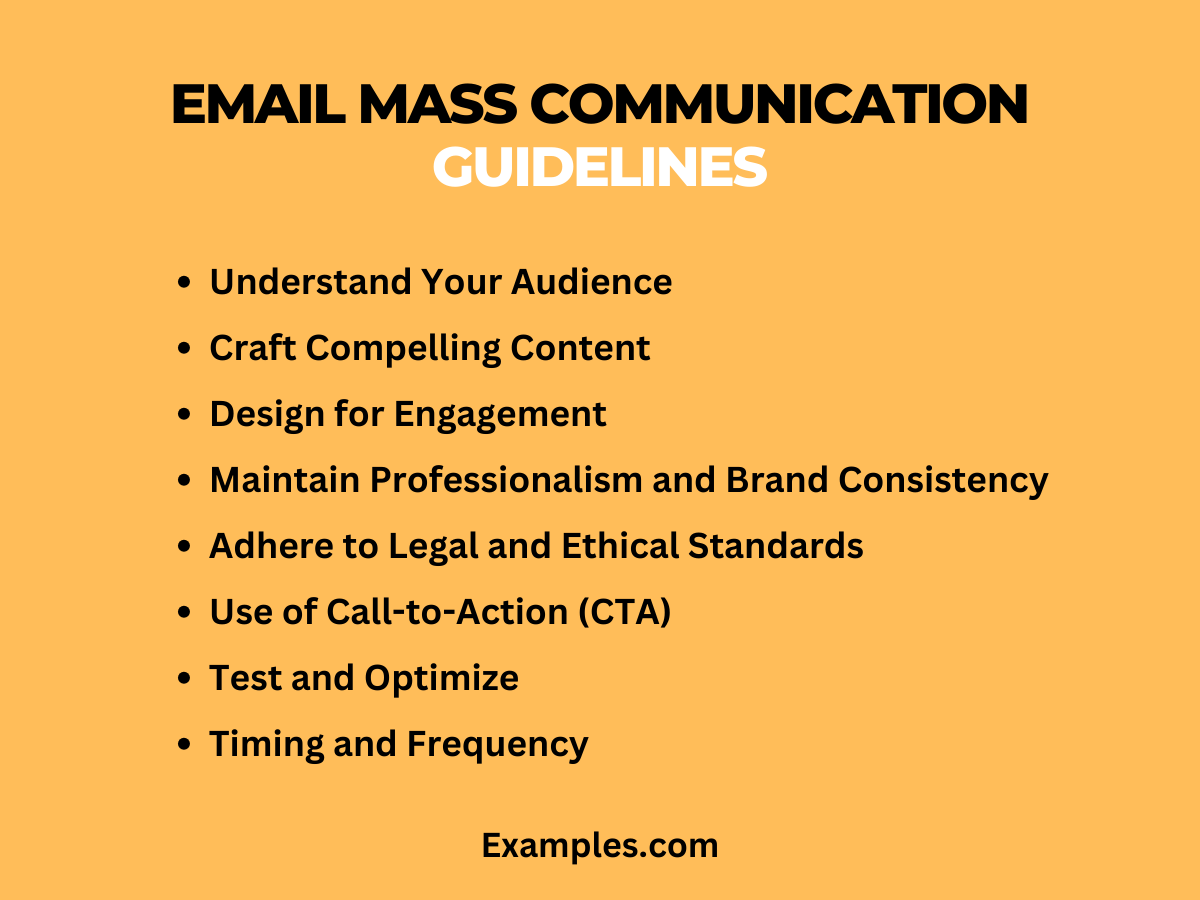
Understand Your Audience
- Audience Segmentation: Segment your email list based on demographics, interests, or behaviors to tailor your messages effectively.
- Personalization: Use personalization techniques to make emails more relevant and engaging for each recipient.
Craft Compelling Content
- Clear and Concise Messages: Ensure your emails are clear, concise, and to the point, making them easier to read and understand.
- Strong Subject Lines: Create engaging and informative subject lines that encourage recipients to open the email.
Design for Engagement
- Visually Appealing Layouts: Use attractive and professional designs that reflect your brand and enhance readability.
- Responsive Design: Ensure emails are mobile-friendly, as many users access their emails via smartphones or tablets.
Maintain Professionalism and Brand Consistency
- Brand Voice and Style: Keep a consistent brand voice and style across all emails to build brand recognition and trust.
- Professional Tone: Maintain a professional tone, especially in business or formal communications.
Adhere to Legal and Ethical Standards
- Compliance with Laws: Follow laws and regulations like CAN-SPAM Act, ensuring lawful email practices.
- Respect for Privacy: Be mindful of recipients’ privacy and provide clear options for unsubscribing or managing email preferences.
Use of Call-to-Action (CTA)
- Effective CTAs: Include clear and compelling calls-to-action that guide recipients on what to do next.
- Relevance of CTAs: Ensure that the CTAs are relevant to the content of the email and the interests of the audience.
Test and Optimize
- A/B Testing: Conduct A/B tests on various elements like subject lines, content, and CTAs to determine what works best.
- Continuous Improvement: Regularly analyze email performance metrics and adapt strategies based on insights gained.
Timing and Frequency
- Strategic Timing: Send emails at times when they are likely to be opened, based on your audience’s habits.
- Appropriate Frequency: Balance the frequency of emails to keep subscribers engaged without overwhelming them.
By adhering to these guidelines, your email mass communication efforts can be more targeted, engaging, and successful. It’s about striking the right balance between informative content, attractive design, and strategic execution, all while maintaining ethical and legal standards in digital communication.
What Do You Write in a Mass Email Communication?
Crafting a mass email communication requires a thoughtful approach to ensure your message is clear, engaging, and effective. Whether you’re reaching out to customers, clients, or a broader audience, the content of your email should be tailored to meet your communication goals. Here’s a guide to what you should include in a mass email to make it impactful and relevant.
Clear and Catchy Subject Line
- Attention-Grabbing: Start with a subject line that captures attention and gives a hint about the email’s content.
- Relevance: Ensure it’s relevant to the recipient to increase the likelihood of the email being opened.
Personalized Greeting
- Individualized Approach: Use the recipient’s name for a personal touch, making the email feel less generic and more engaging.
- Connection: A personalized greeting helps in establishing a connection with the recipient.
Concise and Relevant Content
- Core Message: Clearly state the purpose of your email. Whether it’s an update, offer, or information, the main message should be immediately clear.
- Relevance and Value: Ensure the content is relevant to the audience and adds value to them.
Visually Appealing Layout
- Aesthetic Design: Use a visually pleasing layout with a clean design and readable fonts.
- Brand Consistency: Include your brand colors and logo for consistency and brand recognition.
Strong Call to Action (CTA)
- Action-Oriented: Include a clear call to action that tells the recipient what to do next – whether it’s to buy a product, register for an event, or read more information.
- Visibility: Make the CTA stand out with buttons or contrasting colors.
Informative Footer
- Contact Information: Include your contact details, such as phone number, email address, or physical address.
- Unsubscribe Option: Provide an easy way for recipients to unsubscribe, respecting their communication preferences.
Use of Multimedia (If Applicable)
- Visuals and Videos: Incorporate relevant images or videos to make the email more engaging.
- Balance: Ensure that multimedia elements complement the text rather than overwhelming it.
Social Media Links
- Integration: Include links to your social media profiles to encourage recipients to connect with you on different platforms.
- Engagement: This also offers an alternative way for recipients to engage with your content.
Proofreading and Testing
- Error-Free Content: Proofread your email to ensure it is free from spelling or grammatical errors.
- Email Testing: Test the email for different devices and email clients to ensure it displays correctly.
Writing for mass email communication involves balancing informative content with an engaging and visually appealing presentation. By focusing on these key elements, you can create effective email campaigns that resonate with your audience and achieve your communication objectives.
How Do You Write a Mass Communication Email?
Writing a mass communication email involves a combination of strategic planning and creative execution. These emails are designed to reach a large audience and must be crafted carefully to ensure they are engaging, relevant, and effective.
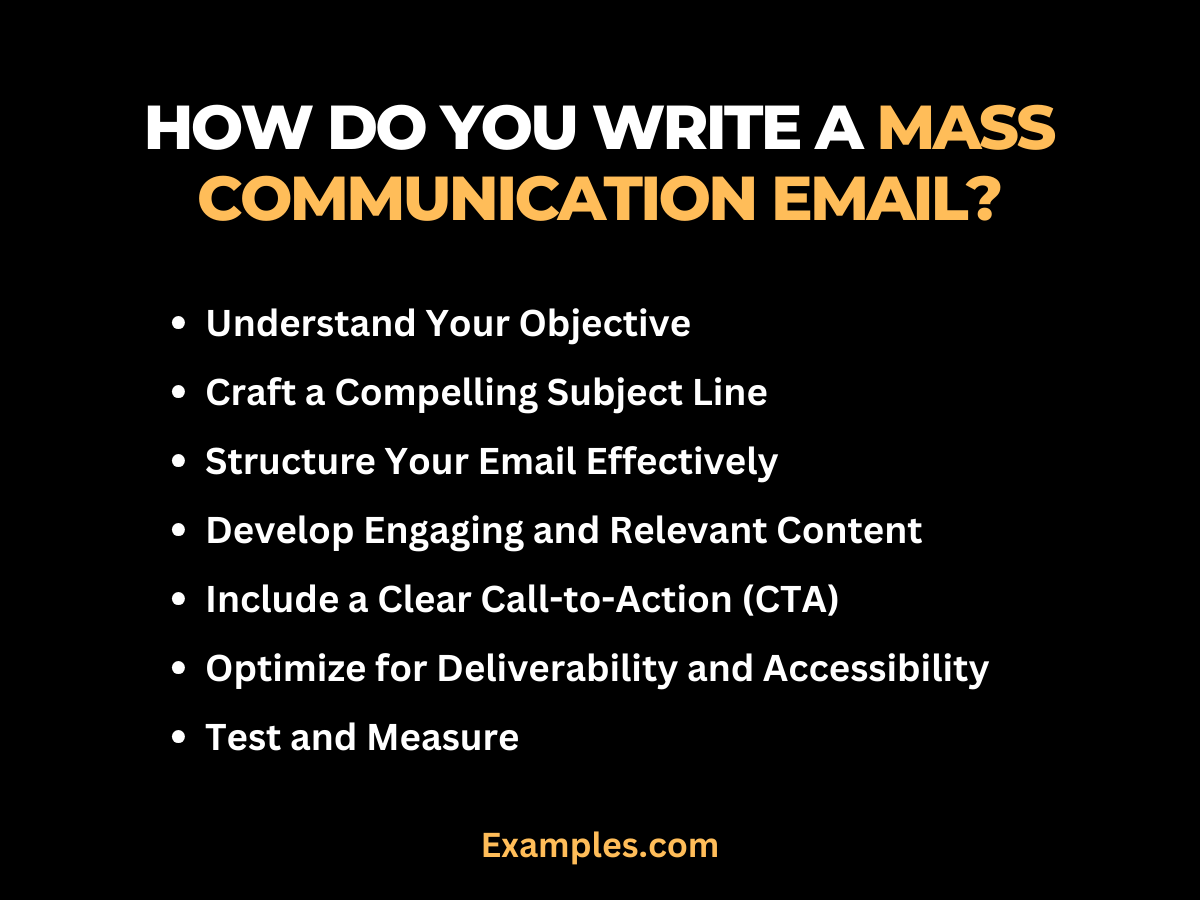
Here’s a guide to help you write a mass communication email that resonates with your audience.
Understand Your Objective
- Clear Purpose: Define the primary goal of your email. Whether it’s to inform, promote, or engage, your objective should dictate the content and tone.
- Target Audience Identification: Understand who your audience is. Tailoring your message to their interests and needs increases the likelihood of engagement.
Craft a Compelling Subject Line
- Attention-Grabbing: The subject line is your first impression. Make it catchy, intriguing, and relevant to prompt recipients to open the email.
- Clarity and Brevity: Keep it short and clear. A concise subject line that conveys the essence of your email is more effective.
Structure Your Email Effectively
- Organized Layout: Use a clear and logical structure. Start with a greeting, followed by the main message, and conclude with a call-to-action.
- Visually Appealing Design: Incorporate a visually pleasing design with an easy-to-read font, branded elements, and appropriate images or graphics.
Develop Engaging and Relevant Content
- Valuable Information: Ensure your content is informative and offers value to the reader.
- Personalization: Use personalization techniques, like addressing the recipient by name, to create a more intimate and engaging experience.
Include a Clear Call-to-Action (CTA)
- Actionable CTA: Be clear about what you want the recipients to do after reading your email. Whether it’s visiting a website, signing up for a service, or attending an event, your CTA should be prominent and compelling.
- Urgency and Incentives: Create a sense of urgency or offer incentives to encourage immediate action.
Optimize for Deliverability and Accessibility
- Avoid Spam Triggers: Use language that won’t trigger spam filters and ensure your email list is up-to-date.
- Mobile-Friendly Design: With many users accessing emails on mobile devices, ensure your email design is responsive and looks good on all screens.
Test and Measure
- A/B Testing: Experiment with different subject lines, designs, and content to see what works best.
- Analytics: Use email analytics to track open rates, click-through rates, and conversions. This data will help you refine and improve future email campaigns.
Writing a mass communication email requires attention to detail, an understanding of your audience, and an ability to convey your message succinctly and attractively. By following these steps, you can create emails that not only reach a wide audience but also engage and resonate with them effectively.
How to Send Email Mass Communication
Sending email mass communication effectively requires careful planning and execution. Whether it’s for marketing purposes, informational newsletters, or general announcements, following these steps can ensure your email campaigns are successful and well-received.
Step 1: Define Your Objectives
- Identify Goals: Clearly define what you aim to achieve with your email campaign, whether it’s driving sales, increasing awareness, or disseminating information.
- Target Audience Identification: Understand who your target audience is. This will guide the tone, content, and timing of your emails.
Step 2: Build Your Email List
- List Compilation: Collect email addresses from your clients, website visitors, or event attendees. Ensure you have their consent for email communication.
- Segmentation: Divide your email list into segments based on demographics, behavior, or preferences for more targeted communication.
Step 3: Choose an Email Marketing Service
- Select a Provider: Choose an email marketing service like MailChimp, Constant Contact, or SendGrid. These services offer tools for creating, sending, and tracking emails.
- Integration: Ensure the service integrates well with your other marketing tools and customer relationship management systems.
Step 4: Craft Your Email Content
- Engaging Subject Line: Create a compelling subject line to encourage recipients to open the email.
- Relevant and Valuable Content: Ensure the email content is relevant, valuable, and aligns with your objectives. Use a clear and engaging tone.
Step 5: Design the Email
- Visually Appealing Layout: Use a layout that is visually appealing and aligns with your brand identity.
- Mobile Optimization: Ensure the email design is responsive and looks good on various devices, especially mobile phones.
Step 6: Personalize and Customize
- Personalization: Use the recipient’s name and personalize content where possible to increase engagement.
- Customization: Tailor messages for different segments of your audience to make them more relevant.
Step 7: Test and Optimize
- A/B Testing: Conduct A/B testing with different subject lines, content, and designs to see what works best.
- Optimization: Use the insights gained from testing to optimize future email campaigns.
Step 8: Schedule and Send
- Timing: Choose the best time to send the emails based on your audience’s behavior.
- Scheduling: Use the email service’s scheduling feature to send emails at the determined time.
Step 9: Monitor and Analyze
- Tracking: Monitor open rates, click-through rates, and conversions to gauge the effectiveness of your email.
- Analysis: Analyze the results and gather insights for future campaigns.
Step 10: Follow-Up and Maintain List Hygiene
- Follow-Up: Send follow-up emails if necessary, based on the recipients’ interaction with the initial email.
- List Maintenance: Regularly update and clean your email list to remove inactive or unresponsive addresses.
By following these steps, you can effectively manage and execute email mass communication campaigns that reach and resonate with your audience, driving your desired outcomes in the field of digital marketing and communication strategies.
In conclusion, email mass communication stands as a vital pillar in the digital communication landscape, offering a direct and personalized way to reach diverse audiences. By leveraging strategic planning, creative content, and analytical insights, email campaigns can significantly enhance engagement and achieve various communication goals, making them an indispensable tool for businesses and organizations in today’s fast-paced digital world.



